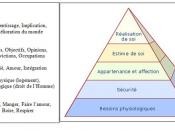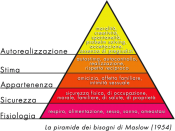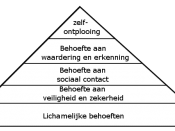Abstract
There are many different theories businesses can use to motivate employees. The five most common theories are: Maslow's Theory, ERG Theory, Herzberg's Two Factor Theory, Adam's Equity Theory, and the Expectancy Theory. Each can boost employee response if used correctly.
Motivating Employees
There are five different personality theories which we will be discussing. These five are: Maslow's Theory, ERG Theory, Herzberg's Two Factor Theory, Adam's Equity Theory, and the Expectancy Theory. Although a few theories seem about the same, each one offers a different aspect on personality theories. We will then apply some of these theories to Walking TALL Shoe Company as they try to motivate employees.
First, let's discuss Maslow's Theory. Abraham Maslow, born in 1908 and died in 1970, is well known for establishing the theory of a hierarchy of needs. "He states that people are motivated by unsatisfied needs, and that certain lower needs have to be satisfied before higher needs can be satisfied" (Boeree, 1998, pg.
1). For example:
"If you are hungry and thirsty, you will try to take care of the thirst first. Because, you can do without food for weeks, but you can only do without water for a couple of days! Thirst is a "stronger" need than hunger. But, if you are very thirsty, and someone put a choke hold on you and you can't breathe, which is more important? The need to breathe, of course. In addition, sex is less powerful than any of these. Let's face it; you won't die if you don't get it!" (Boeree, maslow.theory p.2).
According to Maslow theory, there are general types of needs: the physiological need, the need for safety and security, the need for love and belonging, the need for esteem, and the need to actualize the self. The physiological needs are very...


